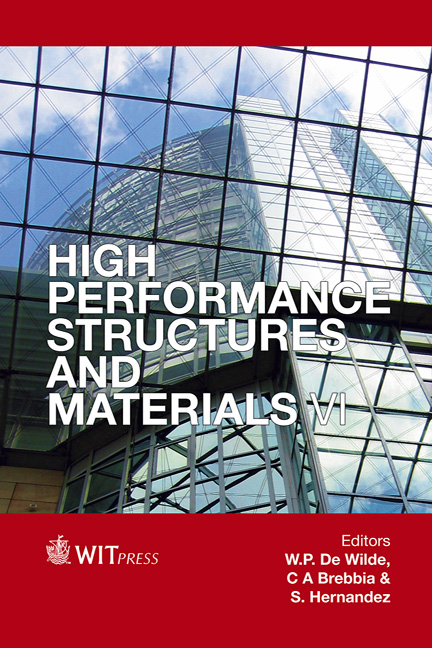Experimental Analysis Of Composite Steel-concrete Slabs
Price
Free (open access)
Transaction
Volume
124
Pages
8
Page Range
209 - 216
Published
2012
Size
913 kb
Paper DOI
10.2495/HPSM120181
Copyright
WIT Press
Author(s)
R. Karásek, J. Holomek, M. Bajer & J. Barnat
Abstract
Composite structures fabricated from thin-walled steel sheeting and concrete slabs are especially suitable for roof and floor bearing structures. Using embossments for the shear connection between the sheeting and the concrete simplifies and accelerates the construction process because it ensures the composite action of the two materials without any need for additional reinforcement. This article is focused on this type of connection. It contains a short review of thin-walled sheeting manufactured in Western Europe and presents results obtained from the experimental testing of specimens. These specimens were tested by vacuum loading and by cyclic loading in four-point bending tests. Small scale specimen tests were performed to determine the shear behaviour and to adjust numerical models. Keywords: composite action, cold-formed steel sheet, concrete slab, shear connection, embossment. 1 Introduction In order to ensure composite action in steel-concrete slabs, connection members must be used. Cold-formed embossments may be an effective and easily producible solution for this problem. Manufacturers in Europe offer several types of thin-walled sheeting with embossments: self-locking with dimples on the upper flange (SHR 51, Cofrastra 40) – fig. 1(a); self-locking with dimples on the slanted sides (Cofrastra 70) – fig. 1(b); trapezoidal with dimples on the upper flange (Cofraplus 220) – fig. 1(c); trapezoidal with dimples on the slanted sides (Cofraplus 60, Hi-Bond A55, Hi-Bond A75, Haircol 55S, Haircol 80S, Prins
Keywords
composite action, cold-formed steel sheet, concrete slab, shear connection, embossment.





